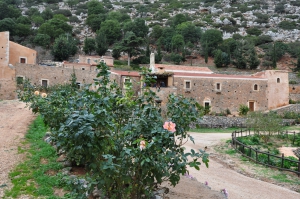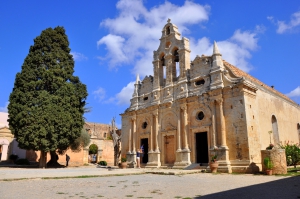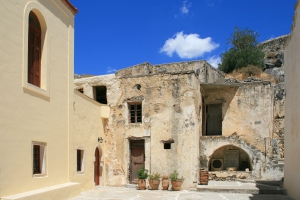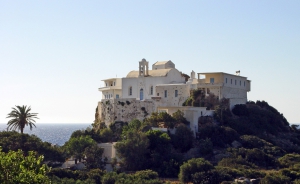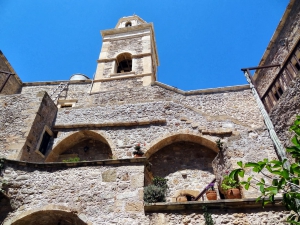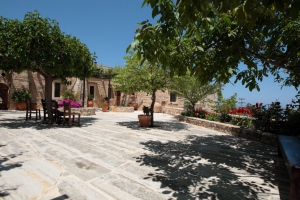The monastery of Agia Triada of Tzagarolon is one of the richest and most beautiful monasteries in Crete. It is built near the airport of Chania, in the position Tzobomylos of the Cape Melecha and at the foothills of Stavros Mount. The distance from Chania is only 15km.
The monastery of Holy Cross in Vosako is built in a small plateau between the peaks Koutroulis and Mesokofinas of the Talean Mountains, 50km east of Rethymno. The monastery can be accessed by car via the village Doxaro and the rough landscape is amazing. There is a second road starting from Sisses village.
Arkadi Monastery is located near the village Amnatos, 23km east of Rethymno. It is built at an altitude of 500m, on a fertile plateau with olive groves, vineyards, pine, cypress and oak trees. Around the monastery there are several picturesque chapels and from there starts the beautiful Arkadi gorge.
The monastery of Preveli (or Prevelis) includes two separate monasteries which are located 1.7km from each other, the Kato (Lower) Monastery of Prodromos and the Piso (Back) Monastery of Theologos.
The monastery of Panagia Chrisoskalitissa is located 72km south of Chania, very close to the magnificent lagoon of Elafonissi. It operates as a nunnery and reminds of a fortress, perched on a 35m high rock with boundless sea views.
The Monastery of Kera Kardiotissa is located 50km southeast of Heraklion, in a wooded area of North Dikti Range, next to the road leading to the Plateau of Lassithi. This is a historic monastery, after which the nearby settlements of Kera and Ano Kera Kera have been named.
Toplou Monastery is located in the northeastern tip of Crete, at the base of Sidero Cape, 10km east of Sitia and 6km north of Palekastro. The monastery is one of the most historic monasteries of Crete and is known for its vast real property. In religious circles it is known as the Monastery of Panagia Akrotiriani, while the locals just call it the Great Monastery.












